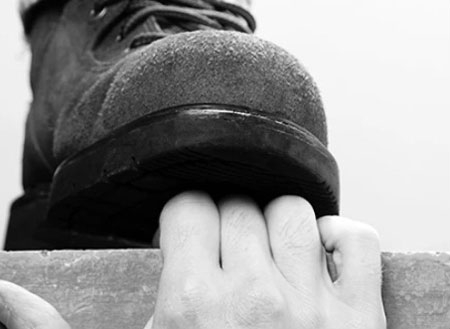
Candy Crush isn’t the only setting where crushing exists. With summer activities in full swing, crush injuries to appendages are abundant. Boats crushing fingers and toes poking over the edge of a pier can be a heartbreaking end to a long weekend of up north fun, cement blocks dropped on feet can bring the weekend’s big landscaping project to a screeching halt, and a dumbbell or weight plate dropped on really any part of the body can bring this season’s ‘beach bod’ aspirations to an abrupt end. But what does such an injury actually involve? Let’s find out!
A crush injury occurs when an appendage is, you guessed it, crushed between two objects. Crush injuries can involve open wounds, nerve damage, tendinous or ligamentous injury, and sometimes fracture of the bony structures. When a patient with a crush injury presents to the Emergency Room (or your trusted Ortho-ASAP clinic if you are lucky enough to get hurt while we are open), the first step is to x-ray the affected area to assess the bony integrity, rule out potential fractures, and identify any foreign objects that may be lodged in the soft tissue. Once completed, a digital nerve block to numb the sensitive area is administered, and irrigation and debridement of the affected site commences. A sterile solution is used to wash out the wound, clean the area, and remove any foreign objects identified in the x-ray. Depending on the type of wound and affected structures, the skin may be closed with nylon sutures to allow for healing
and prevent further contaminants and foreign objects from infecting the area. Oral antibiotics will likely be prescribed as well. At this point, the site would be bandaged and the patient referred to Orthopaedic Associates of Wisconsin for further evaluation and determination of care.
Most of the crush injuries that make their way to our clinic are hands and feet, and you will be scheduled with one of our extremity specialists for clinical examination. If a partial amputation of tissue took place at the time of injury, your surgeon will assess the remaining tissue to determine if it is a wound that will heal on its own with proper bandaging and protection or if it will require surgical intervention to preserve function. Surgery could involve a skin graft or reconstructive skin flap taken from an uninvolved area of your hand or foot to assist in effectively closing the wound if an insufficient amount of healthy tissue remains at the site of injury. If bone is exposed, attention may be needed to shorten the bone ever so slightly so the wound itself can be closed successfully. Shaving down of the bone should not affect regaining function down the line.
Whether your treatment is conservative or surgical, the area must remain bandaged and protected while it heals. If your injury was to a finger, you will likely be referred to occupational therapy for desensitization of the nerves and range of motion exercises to regain normal function. The process of healing a crush injury can be timely and test one’s patience, but we are with you every step of the way. We are determined to get you back to the summer activities you love as soon as possible!
This blog is written by one of our very own-Morgan. She is a certified athletic trainer working as a medical assistant with our providers each and every day in our clinic. She obtained a bachelor's degree in athletic training from Carroll University in Waukesha and a master's degree in Kinesiology from Michigan State University. She is excited to bring you updates and information about the happenings at OAW.

